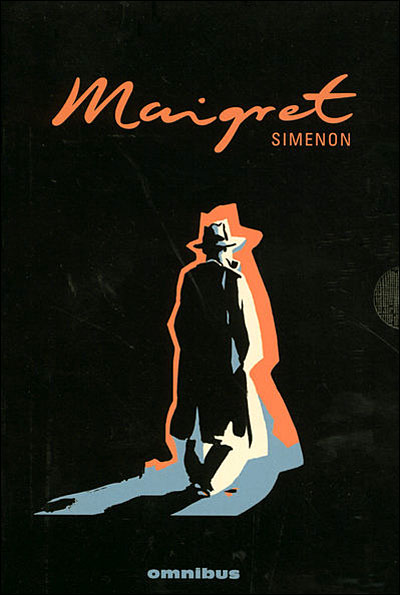|
You’re the primary person responsible for the marketing of your book. Publishers don’t use marketing to cause books to sell well—they help books that are already selling well to sell even better. To use a pyromaniac analogy, publishers are accelerants, not sparks.
However, there are some publishers who are embracing the new electronic realities of publishing. O’Reilly Media is one example. Let’s take a look at its approach to publishing: Direct sales. O’Reilly sells books directly to people from its website. It doesn’t try to preserve a multi-tiered distribution model that doesn’t necessarily serve customers better. Multiple formats. O’Reilly provides ebooks in PDF, EPUB, MOBI, DAISY, and Android APK formats as well as printed-on-paper. DRM-free. O’Reilly publishes ebooks that are free of digital rights management (DRM). (More about DRM in chapter 20: “Self-Publishing Issues.”) Easy access. Customers can download their O’Reilly books in as many formats as many times for as many devices as they want. Syncing. People can sync their O’Reilly books to Dropbox (a cloud-based storage service) accounts. (More about Dropbox in chapter 5: “Tools for Writers.”) Online subscription. O’Reilly created the Safari Books Online brand, which provides online subscription access to books, videos, and interactive learning tools. Community. There is a question-and-answer forum as well as a community forum for O’Reilly customers. Conferences. O’Reilly conducts conferences around the world about the topics in its books. Multimedia. O’Reilly offers webcasts by authors as well as online educational courses and certification. O’Reilly is the way of the future: multiple formats, DRM-free, and expanding the definition of publishing to include multimedia learning, community forums, and face-to-face conferences. APE: Author, Publisher, Entrepreneur-How to Publish a Book by Guy Kawasaki, Shawn Welch The greatest impediment to creativity is your impatience, the almost inevitable desire to hurry up the process, express something, and make a splash. What happens in such a case is that you do not master the basics; you have no real vocabulary at your disposal. What you mistake for being creative and distinctive is more likely an imitation of other people’s style, or personal rantings that do not really express anything. Audiences, however, are hard to fool. They feel the lack of rigor, the imitative quality, the urge to get attention, and they turn their backs, or give the mildest praise that quickly passes. The best route is to follow Coltrane and to love learning for its own sake. Anyone who would spend ten years absorbing the techniques and conventions of their field, trying them out, mastering them, exploring and personalizing them, would inevitably find their authentic voice and give birth to something unique and expressive.
Mastery by Robert Greene Author Jonathan Franzen takes the temptation of multitasking so seriously that, to write his bestselling novel Freedom, he locked himself away in a sparsely furnished office. As he told Time magazine, he went so far as to strip his vintage laptop of its wireless card and surgically destroy its Ethernet port with superglue and a saw. He then established a cocoon-like environment with earplugs and noise-cancelling headphones.
A little extreme, perhaps, but Franzen demonstrated shrewd insight into human fallibility. Creative minds are highly susceptible to distraction, and our newfound connectivity poses a powerful temptation for all of us to drift off focus. Studies show that the human mind can only truly multitask when it comes to highly automatic behaviors like walking. For activities that really no such thing as multitasking, only task switching—the process of flicking the mind back and forth between different demands. It can feel as though we’re super-efficiently doing two or more things at once. But in fact we’re just doing one thing, then another, then back again, with significantly less skill and accuracy than if we had simply focused on one job at a time. Manage Your Day-to-Day: Build Your Routine, Find Your Focus, and Sharpen Your Creative Mind (The 99U Book Series)by Jocelyn K. Glei As Pasteur himself commented, “Chance favors only the prepared mind.”
One reason that serendipity plays such a large role in discoveries and inventions is that our minds are limited. We cannot explore all avenues and imagine every possibility. Random external stimuli lead us to associations we cannot come by on our own. Like seeds floating in space, they require the soil of a highly prepared and open mind to take root in and sprout a meaningful idea. Serendipity strategies can be interesting devices in the arts as well. For instance, the writer Anthony Burgess, trying to free his mind up from the same stale ideas, decided on several occasions to choose random words in a reference book and use them to guide the plot of a novel, according to the order and associations of the words. Once he had completely haphazard starting points, his conscious mind took over and he worked them into extremely well-crafted novels with surprising structures. The surrealist artist Max Ernst did something similar in a series of paintings inspired by the deep grooves in a wood floor that had been scrubbed too many times. He laid pieces of paper rubbed with black lead on the floor at odd angles, and made prints of them. Based on these prints, he proceeded to make surreal and hallucinatory drawings. In these examples, a random idea was used to force the mind to create novel associations and to loosen up the creative urge. This mix of complete chance and conscious elaboration often creates novel and exciting effects. To help yourself to cultivate serendipity, you should keep a notebook with you at all times. The moment any idea or observation comes, you note it down. You keep the notebook by your bed, careful to record ideas that come in those moments of fringe awareness—just before falling asleep, or just upon waking. In this notebook you record any scrap of thought that occurs to you, and include drawings, quotes from other books, anything at all. In this way, you will have the freedom to try out the most absurd ideas. The juxtaposition of so many random bits will be enough to spark various associations. Mastery by Robert Greene The strategy is simple, I think.
The strategy is to have a practice, and what it means to have a practice is to regularly and reliably do the work in a habitual way. The practice is a big part. The second part of it, which I think is really critical, is understanding that being creative means that you have to sell your ideas. If you’re a professional, you do not get to say, “Ugh, now I have to go sell it”—selling it is part of it because if you do not sell it, there is no art. No fair embracing one while doing a sloppy job on the other. The reason you might be having trouble with your practice in the long run—if you were capable of building a practice in the short run—is nearly always because you are afraid. The fear, the resistance, is very insidious. It doesn’t leave a lot of fingerprints, but the person who manages to make a movie short that blows everyone away but can’t raise enough cash to make a feature film, the person who gets a little freelance work here and there but can’t figure out how to turn it into a full-time gig—that person is practicing self-sabotage. These people sabotage themselves because the alternative is to put themselves into the world as someone who knows what they are doing. They are afraid that if they do that, they will be seen as a fraud. It’s incredibly difficult to stand up at a board meeting or a conference or just in front of your peers and say, “I know how to do this. Here is my work. It took me a year. It’s great.” This is hard to do for two reasons: (1) it opens you to criticism, and (2) it puts you into the world as someone who knows what you are doing, which means tomorrow you also have to know what you are doing, and you have just signed up for a lifetime of knowing what you are doing. It’s much easier to whine and sabotage yourself and blame the client, the system, and the economy. This is what you hide from—the noise in your head that says you are not good enough, that says it is not perfect, that says it could have been better. Seth Godin Manage Your Day-to-Day: Build Your Routine, Find Your Focus, and Sharpen Your Creative Mind (The 99U Book Series) by Jocelyn K. Glei We tend to overestimate what we can do in a short period, and underestimate what we can do over a long period, provided we work slowly and consistently.
Anthony Trollope, the nineteenth-century writer who managed to be a prolific novelist while also revolutionizing the British postal system, observed, “A small daily task, if it be really daily, will beat the labours of a spasmodic Hercules.” Over the long run, the unglamorous habit of frequency fosters both productivity and creativity. Frequency makes starting easier. Getting started is always a challenge. It’s hard to start a project from scratch, and it’s also hard each time you re-enter a project after a break. By working every day, you keep your momentum going. Frequency keeps ideas fresh. You’re much more likely to spot surprising relationships and to see fresh connections among ideas, if your mind is constantly humming with issues related to your work. Frequency keeps the pressure off. If you’re producing just one page, one blog post, or one sketch a week, you expect it to be pretty darned good, and you start to fret about quality. Frequency sparks creativity. You might be thinking, “Having to work frequently, whether or not I feel inspired, will force me to lower my standards.” In my experience, the effect is just the opposite. Often folks achieve their best work by grinding out the product. Creativity arises from a constant churn of ideas, and one of the easiest ways to encourage that fertile froth is to keep your mind engaged with your project. Frequency nurtures frequency. If you develop the habit of working frequently, it becomes much easier to sit down and get something done even when you don’t have a big block of time; you don’t have to take time to acclimate yourself. I know a writer married to a painter, and she told me, “We talk about the ‘ten-minute rule.’ If our work is going well, we can sit down and get something good done in ten minutes.” Frequency fosters productivity. It’s no surprise that you’re likely to get more accomplished if you work daily. The very fact of each day’s accomplishment helps the next day’s work come more smoothly and pleasantly. Frequency is a realistic approach. Frequency is helpful when you’re working on a creative project on the side, with pressing obligations from a job or your family. “What I do every day matters more than what I do once in a while.” Day by day, we build our lives, and day by day, we can take steps toward making real the magnificent creations of our imaginations. Tactics are idiosyncratic but strategies are universal There are a lot of talented folks who are not succeeding the way they want to because their strategies are broken. The strategy is simple, I think. The strategy is to have a practice, and what it means to have a practice is to regularly and reliably do the work in a habitual way. Manage Your Day-to-Day: Build Your Routine, Find Your Focus, and Sharpen Your Creative Mind (The 99U Book Series)) by Jocelyn K. Glei You must let go of your need for comfort and security. Creative endeavors are by their nature uncertain. You may know your task, but you are never exactly sure where your efforts will lead. If you need everything in your life to be simple and safe, this open-ended nature of the task will fill you with anxiety. If you are worried about what others might think and about how your position in the group might be jeopardized, then you will never really create anything. You will unconsciously tether your mind to certain conventions,
We do not like what is unfamiliar or unknown. To compensate for this, we assert ourselves with opinions and ideas that make us seem strong and certain. Many of these opinions do not come from our own deep reflection, but are instead based on what other people think. Furthermore, once we hold these ideas, to admit they are wrong is to wound our ego and vanity. Truly creative people in all fields can temporarily suspend their ego and simply experience what they are seeing, without the need to assert a judgment, for as long as possible. This ability to endure and even embrace mysteries and uncertainties is what Keats called negative capability. All Masters possess this Negative Capability, and it is the source of their creative power. This quality allows them to entertain a broader range of ideas and experiment with them, which in turn makes their work richer and more inventive. Negative Capability will be the single most important factor in your success as a creative thinker. In the sciences, you will tend to entertain ideas that fit your own preconceptions and that you want to believe in. This unconsciously colors your choices of how to verify these ideas, and is known as confirmation bias. With this type of bias, you will find the experiments and data that confirm what you have already come to believe in. The uncertainty of not knowing the answers beforehand is too much for most scientists. In the arts and letters, your thoughts will congeal around political dogma or predigested ways of looking at the world, and what you will often end up expressing is an opinion rather than a truthful observation about reality. To put Negative Capability into practice, you must develop the habit of suspending the need to judge everything that crosses your path. You consider and even momentarily entertain viewpoints opposite to your own, seeing how they feel. You observe a person or event for a length of time, deliberately holding yourself back from forming an opinion. You seek out what is unfamiliar—for instance, reading books from unfamiliar writers in unrelated fields or from different schools of thought. You do anything to break up your normal train of thinking and your sense that you already know the truth. Mastery by Robert Greene “It’s not about ideas, it’s about making ideas happen.”
It’s time to stop blaming our surroundings and start taking responsibility. While no workplace is perfect, it turns out that our gravest challenges are a lot more primal and personal. Our individual practices ultimately determine what we do and how well we do it. Specifically, it’s our routine (or lack thereof), our capacity to work proactively rather than reactively, and our ability to systematically optimize our work habits over time that determine our ability to make ideas happen. Through our constant connectivity to each other, we have become increasingly reactive to what comes to us rather than being proactive about what matters most to us. Truly great creative achievements require hundreds, if not thousands, of hours of work, and we have to make time every single day to put in those hours. Routines help us do this by setting expectations about availability, aligning our workflow with our energy levels, and getting our minds into a regular rhythm of creating. At the end of the day—or, really, from the beginning—building a routine is all about persistence and consistency. Don’t wait for inspiration; create a framework for it. CREATIVE WORK FIRST, REACTIVE WORK SECOND The single most important change you can make in your working habits is to switch to creative work first, reactive work second. This means blocking off a large chunk of time every day for creative work on your own priorities, with the phone and e-mail off. I used to be a frustrated writer. Making this switch turned me into a productive writer. Now, I start the working day with several hours of writing. I never schedule meetings in the morning, if I can avoid it. So whatever else happens, I always get my most important work done—and looking back, all of my biggest successes have been the result of making this simple change. But it’s better to disappoint a few people over small things, than to surrender your dreams for an empty inbox. Otherwise you’re sacrificing your potential for the illusion of professionalism. Manage Your Day-to-Day: Build Your Routine, Find Your Focus, and Sharpen Your Creative Mind (The 99U Book Series) by Jocelyn K. Glei Georges Simenon was one of the most prolific novelists of the twentieth century, publishing 425 books in his career, including more than 200 works of pulp fiction under 16 different pseudonyms, as well as 220 novels in his own name and three volumes of autobiography. Remarkably, he didn’t write every day.
The Belgian-French novelist worked in intense bursts of literary activity, each lasting two or three weeks, separated by weeks or months of no writing at all. Even during his productive weeks, Simenon didn’t write for very long each day. His typical schedule was to wake at 6:00 A.M., procure coffee, and write from 6:30 to 9:30. Then he would go for a long walk, eat lunch at 12:30, and take a one-hour nap. In the afternoon he spent time with his children and took another walk before dinner, television, and bed at 10:00 P.M. Simenon liked to portray himself as a methodical writing machine—he could compose up to eighty typed pages in a session, making virtually no revisions after the fact—but he did have his share of superstitious behaviors. No one ever saw him working; the “Do Not Disturb” sign he hung on his door was to be taken seriously. He insisted on wearing the same clothes throughout the composition of each novel. He kept tranquilizers in his shirt pocket, in case he needed to ease the anxiety that beset him at the beginning of each new book. And he weighed himself before and after every book, estimating that each one cost him nearly a liter and a half of sweat. Simenon’s astonishing literary productivity was matched, or even surpassed, in one other area of his daily life—his sexual appetite. “Most people work every day and enjoy sex periodically,” Patrick Marnham notes in his biography of the writer. “Simenon had sex every day and every few months indulged in a frenzied orgy of work.” When living in Paris, Simenon frequently slept with four different women in the same day. He estimated that he bedded ten thousand women in his life. (His second wife disagreed, putting the total closer to twelve hundred.) He explained his sexual hunger as the result of “extreme curiosity” about the opposite sex: “Women have always been exceptional people for me whom I have vainly tried to understand. It has been a lifelong, ceaseless quest. And how could I have created dozens, perhaps hundreds, of female characters in my novels if I had not experienced those adventures which lasted for two hours or ten minutes?” Daily Rituals: How Artists Work by Mason Currey Stephen King writes every day of the year, including his birthday and holidays, and he almost never lets himself quit before he reaches his daily quota of two thousand words. He works in the mornings, starting around 8:00 or 8:30. Some days he finishes up as early as 11:30, but more often it takes him until about 1:30 to meet his goal. Then he has the afternoons and evenings free for naps, letters, reading, family, and Red Sox games on TV. In his memoir On Writing, King compares fiction writing to “creative sleep,” and his writing routine to getting ready for bed each night: Like your bedroom, your writing room should be private, a place where you go to dream.
Your schedule—in at about the same time every day, out when your thousand words are on paper or disk—exists in order to habituate yourself, to make yourself ready to dream just as you make yourself ready to sleep by going to bed at roughly the same time each night and following the same ritual as you go. In both writing and sleeping, we learn to be physically still at the same time we are encouraging our minds to unlock from the humdrum rational thinking of our daytime lives. And as your mind and body grow accustomed to a certain amount of sleep each night—six hours, seven, maybe the recommended eight—so can you train your waking mind to sleep creatively and work out the vividly imagined waking dreams which are successful works of fiction. Daily Rituals: How Artists Work by Mason Currey |
Click to set custom HTML
Categories
All
Disclosure of Material Connection:
Some of the links in the post above are “affiliate links.” This means if you click on the link and purchase the item, I will receive an affiliate commission. Regardless, I only recommend products or services I use personally and believe will add value to my readers. I am disclosing this in accordance with the Federal Trade Commission’s 16 CFR, Part 255: “Guides Concerning the Use of Endorsements and Testimonials in Advertising.” |
Photos from Wesley Oostvogels, Thomas Leuthard, swanksalot, Robert Scoble, Lord Jim, Pink Sherbet Photography, jonrawlinson, MonsterVinVin, M. Pratter, greybeard39, Stepan Mazurov, deanmeyersnet, Patrick Hoesly, Lord Jim, Dcysiv Moment, fdecomite, h.koppdelaney, Abode of Chaos, pasa47, gagilas, BAMCorp, cmjcool, Abode of Chaos, faith goble, nerdcoregirl, Adrian Fallace Design & Photography, jmussuto, Easternblot, Jeanne Menjoulet & Cie, aguscr, h.koppdelaney, Saad Faruque, ups2006, Unai_Guerra, erokism, MsSaraKelly, Jem Yoshioka, tony.cairns, david drexler, Reckless Dream Photography, Raffaele1950, kevin dooley, weegeebored, Cast a Line, Zach Dischner, Eddi van W., kmardahl, faungg's photo, Alan Light, acme, Evan Courtney, specialoperations, Mustafa Khayat, darkday., Orin Zebest, Robert S. Donovan, disparkys, kennethkonica, aubergene, Nina Matthews Photography, infomatique, Patrick Hoesly, j0sh (www.pixael.com), SmithGreg, brewbooks, tjsander, The photographer known as Obi, Simone Ramella, striatic, jmussuto, m.a.r.c., jfinnirwin, Nina J. G., pellesten, dreamsjung, misselejane, Design&Joy, eeskaatt, Bravo_Zulu_, No To the Bike Parking Tax, Kecko, quinn.anya, pedrosimoes7, tanakawho, visualpanic, Brooke Hoyer, Barnaby, Fountain_Head, tripandtravelblog, geishaboy500, gordontarpley, Rising Damp, Marc Aubin2009, belboo, torbakhopper, JarleR, aakanayev, santiago nicolau, Official U.S. Navy Imagery, chinnian, GS+, andreasivarsson, paulswansen, victoriapeckham, Thomas8047, timsamoff, ConvenienceStoreGourmet, Jrwooley6, DeeAshley, ethermoon, torbakhopper, Mark Ramsay, dustin larimer, shannonkringen, Stf.O, Todd Huffman, B Rosen, Lord Jim, Jolene4ever, Ben K Adams, Clearly Ambiguous, Daniele Zedda, Ryan Vaarsi, MsSaraKelly, icebrkr, jauhari, ajeofj3, jenny downing, Joi, GollyGforce, Andrew from Sydney, Lord Jim, 'Retard' (says University of Missouri), drukelly, Sullivan Ng, jdxyw, infomatique, AlicePopkorn, RAA408, Abode of Chaos, SaMaNTHa NiGhTsKy, as always..., D@LY3D, Angelo González, the sugary smell of springtime!, Marko Milošević, pedrosimoes7, MartialArtsNomad.com, 401(K) 2013, Sigfrid Lundberg, MoneyBlogNewz, NBphotostream, the stag and doe, Jemima G, bablu121, .reid., jared, EastsideRJ, Alex Alvisi, Marie A.-C., geishaboy500, modomatic, starsnostars., Hardleers, Sarah G..., donielle, Danny PiG, bigcityal, || UggBoy♥UggGirl || PHOTO || WORLD || TRAVEL ||, -KOOPS-, seafaringwoman, kingkongirl, Richard Masoner / Cyclelicious, Hans Gotun, gruntzooki, Duru..., Vectorportal, Peter Hellberg, Alexandre Hamada Possi, Santi Siri, Joshua Rappeneker, a little tune, Patricia Mangual, erokism, woodleywonderworks, Philippe Put, Purple Sherbet Photography, Abode of Chaos, greybeard39, swanksalot, greyloch, Omarukai, Marc_Smith, SLPTWRK, Peter Alfred Hess, illum, MarioMancuso, willc2, _titi, Lightsurgery, Rennett Stowe, feverblue, Esteman., Keith Allison, DCist, h.koppdelaney, Mike Deal aka ZoneDancer, Jos Dielis, The Wandering Angel, Nathaniel KS, MsSaraKelly, Frank Lindecke, Kara Allyson, JeremyGeorge, deoman56, gagilas, Xoan Baltar, Luke Lawreszuk, Eric-P, fdecomite, lorenkerns, masochismtango, Adrian Fallace Design & Photography, anarchosyn, -= Bruce Berrien =-, radiant guy, Free Grunge Textures - www.freestock.ca, El Bibliomata, antmoose, Pedro Belleza, Fitsum Belay/iLLIMETER, Nathan O'Nions, denise carbonell, swanksalot, ▓▒░ TORLEY ░▒▓, Marco Gomes, Justin Ornellas, jenni from the block, René Pütsch, eddieq, thombo2, Ben Mortimer Photography, :moolah, ideowl, joaquinuy, wiredforlego, Rafa G. _, derrickcollins, Fishyone1, ben pollard, Admiralspalast Berlin, Georgio, garybirnie.co.uk, fiskfisk, MoreFunkThanYou, xJason.Rogersx, kevin dooley, David Holmes2, Kris Krug, JD Hancock, Images_of_Money, andriux-uk events, Tyfferz, decafinata, jonrawlinson, isado, Lohan Gunaweera, Derek Mindler, Mike "Dakinewavamon" Kline, themostinept, kiwanja, erokism, dktrpepr, Keoni Cabral, denise carbonell, Neal., tonystl, ericmay, Ally Mauro, erokism, Georgie Pauwels, anitakhart, Ivan Zuber, r2hox, Aka Hige, badjonni, striatic, Arry_B, 401(K) 2012, pvera, Lord Jim, Dredrk aka Mr Sky, TerryJohnston, eschipul, wiredforlego, Yuliya Libkina, fabbio, Justin Ruckman, David Boyle, Matthew Oliphant, Keoni Cabral, Thaddeus Maximus, Abode of Chaos, matthias hämmerly, dospaz, LadyDragonflyCC - >;<, CassiusCassini2011, Abode of Chaos, Jorge Luis Perez, infomatique, Mark Gstohl, AliceNWondrlnd, ç嬥x, ssoosay, striatic, NASA Goddard Photo and Video, feverblue, MsSaraKelly, kohlmann.sascha, Vox Efx, country_boy_shane, paularps, Gage Skidmore, HawkinsSteven, Cam Switzer, Arenamontanus, anieto2k, Georgie Pauwels, my camera and me, Lord Jim, nolifebeforecoffee, Joris_Louwes, Kemm 2, VinothChandar, DeeAshley, brewbooks, craigemorsels, Boris Thaser, Poster Boy NYC, ssoosay, guzzphoto, sachac, chefranden, Wanja Photo, Samuel Petersson, onlyart, samsaundersleeds, Ghita Katz Olsen, mcveja, matthewwu88, Victor Bezrukov, JasonLangheine, erokism, vitroid, thethreesisters, charlywkarl, Sharon & Nikki McCutcheon, Ol.v!er [H2vPk], mikecogh, tec_estromberg, noii's, nicholaspaulsmith, Tucker Sherman, Phil Grondin, Cea., Randomthoughtstome, dcobbinau, rafeejewell, pedrosimoes7, lumaxart, marfis75, roland, RLHyde, David Boyle in DC, Sigfrid Lundberg, Thomas Geiregger, Uberto, bgottsab, Conor Lawless, phphoto2010, Steven | Alan, ckaroli, dweekly, AleBonvini, 드림포유, die.tine, MsSaraKelly, equinoxefr, Sarabbit, Abode of Chaos, Galantucci Alessandro, LadyDragonflyCC - >;< - Spring in Michigan!, Alan Gee, Johan Larsson, SoulRider.222, Robert S. Donovan, amslerPIX, cfaobam, Amy L. Riddle, Bladeflyer, Blomstrom, pumpkincat210, Lord Jim, Symic, kevin dooley, pixelthing, Nelson Minar, Fraser Mummery, The Booklight, edenpictures, everyone's idle, betsyweber, h.koppdelaney, ark, Ben Fredericson (xjrlokix), dphiffer, Jeff Kubina, istolethetv, dullhunk, Tambako the Jaguar, fdecomite, The Daily Ornellas, Badruddeen, kevindooley, mnem, Reyes, sadaton, Mary..K, akunamatata, Dennis Vu Photography for Unleashed Media, mitch98000, ganesha.isis, maria j. luque, doneastwest, w00tdew00t, kevindooley, NightFall404, Infrogmation, nandadevieast, darkpatator, Christos Tsoumplekas, sicamp, Hello Turkey Toe, cliff1066™, James Jordan, gailf548, andrew_byrne, infomatique, graphia, -= Bruce Berrien =-, aphrodite-in-nyc, jmussuto, eiko_eiko, Emily Jane Morgan, _Imaji_, kait jarbeau is in love with you, Leeks, h.koppdelaney, paul-simpson.org, Pinti 1, Namlhots, -KOOPS-











 RSS Feed
RSS Feed

